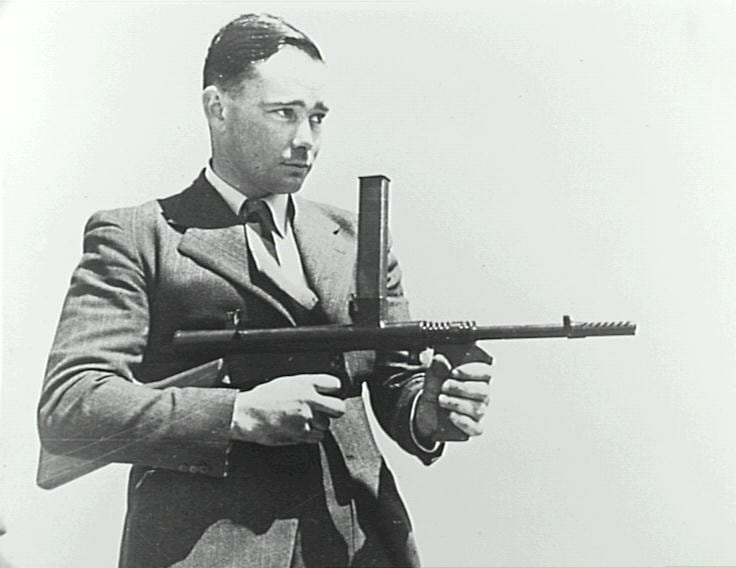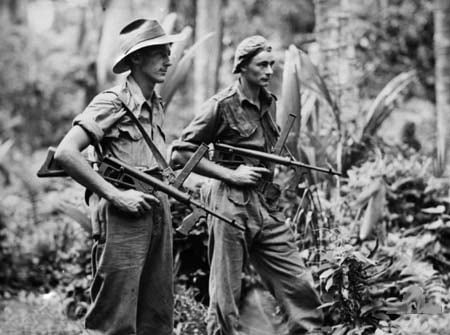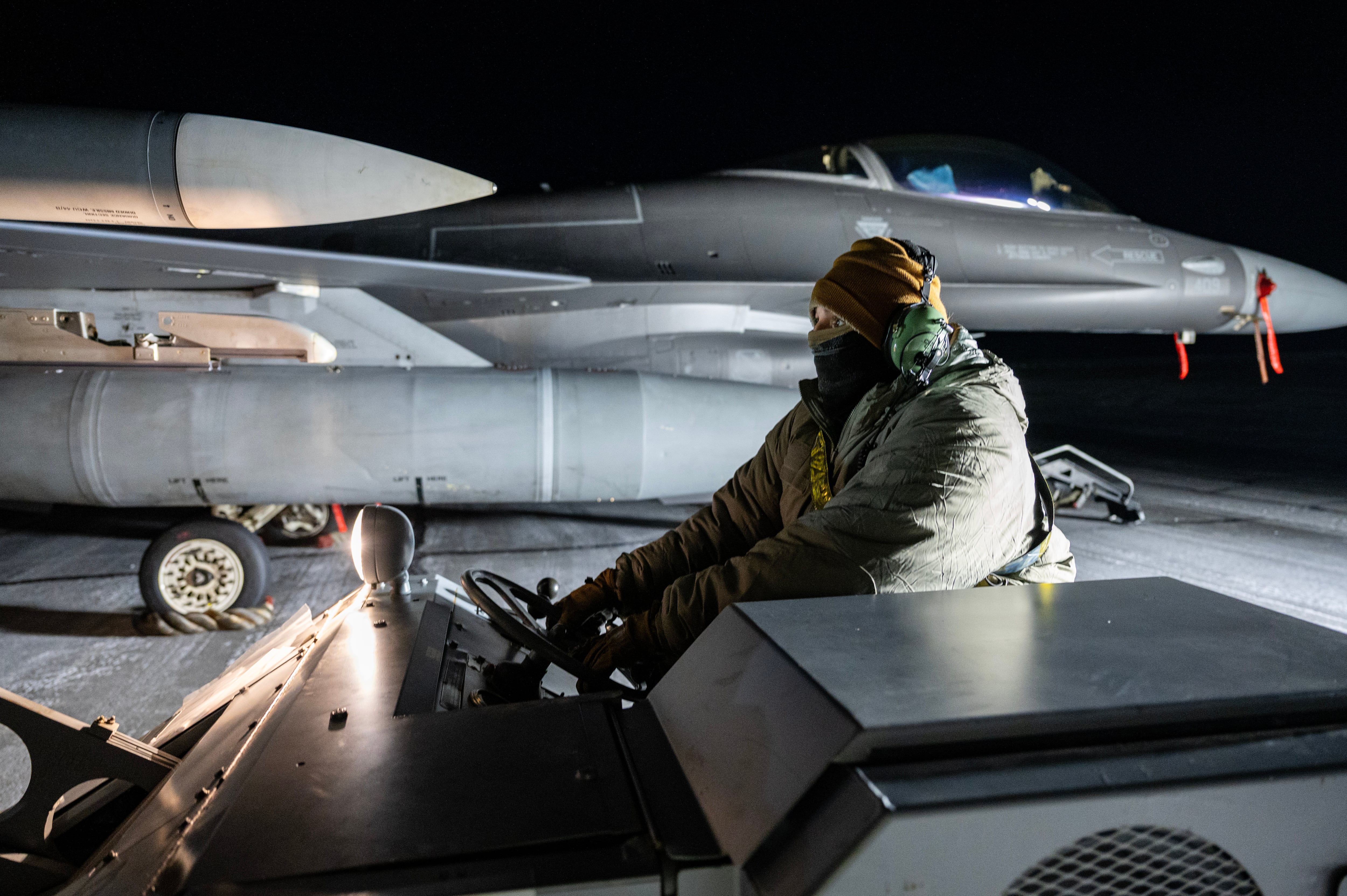With the development of automatic weapons and the massed modern armies of World War I, the gunsmith’s art — which produced firearms as elegant as they were ergonomically comfortable to fire — came to coexist with starkly simple, easily mass produced weapons for which aesthetics were a less than tertiary consideration.
Among the latter was the British Sten submachine gun (SMG), an emergency measure that from its introduction in 1941 came to be a mainstay among resistance and guerrilla forces—an ugly little assembly of stamped metal parts that got the job done.
Arguably the weirdest looking SMG of World War II, however, emerged from the other side of the earth: Australia.
Born in Wollongong, New South Wales on May 15, 1915, Evelyn Owen was a poor student, a failure at the pre-mixed mortar business and an alcoholic.
He also had a penchant for tinkering with firearms, which led in July 1939 to his proposing an “automatic carbine” with a large revolving cylinder for a magazine at the Victoria Barracks in Sydney.
The Australian officers were not impressed. The gun was a feeble .22-caliber, it lacked a proper trigger or safety mechanism and the ammo cylinder could not be removed, only reloaded by hand. Owen literally cast his rejected invention aside in a sugar bag.
When World War II broke out, he joined the Australian army as a private.
In September 1940 Owen’s neighbor, who chanced to be Vincent Wardell, the manager of a steel firm at Port Kembla, happened to find the sugar bag and the gun therein. Impressed by its simplicity, he arranged to have Owen transferred to the Army Inventions Board and put to work developing his fundamental design.

A more conventional trigger and safety mechanism was devised and the rotating cylinder replaced by a simple box magazine that fed not from down under, but from atop the gun, allowing it to be fired prone, but necessitating having the sights offset to the side, an arrangement that favored a right-handed shooter. Weight was about 10 pounds and its simple blowback action with an open bolt could loose 700 rounds per minute.
After trials in mud and sand with three types of ammo—alongside a Sten gun and a Thompson SMG as benchmark weapons—the Own was accepted with 9x19mm rounds as its standard ammunition. Contracted to the John Lysaght factories at Port Kembla and Newcastle, 28,000 Owens guns were produced between March 1942 and February 1943.
Weird as it looked and quirky as its genesis had been, the Owen was doomed to an equally eccentric debut. The initial batch of rounds produced for the gun proved to be the wrong type, delaying issue of the first 10,000 weapons to Australian soldiers who, engaged in combat with the Japanese in New Guinea, sorely needed them. Intervening, the Australian government overrode military bureaucracy to expedite issuance of the right ammo.
Once they finally got their hands on it, Aussie troops appraised the Owen as being a bit bulky but blessedly reliable and handily outperforming the Sten gun. The Owen’s top-mounted magazine may have made sighting awkward, but gravity enhanced the spring in popping rounds into the chamber.
Further, the opening through which the spent round ejected downward also allowed water or other foreign matter to drain from the chamber. Its combat record in New Guinea earned it the nickname of “Diggers’ Delight” and even the American soldiers who got to handle it were favorably impressed, claiming that the Owen was more reliable than their Thompsons. At one point General Douglas MacArthur proposed contracting 45,000 for his own men. As it was, by 1944 Owen SMG production had risen to 45,000 at a price of $30 per gun.
After serving with distinction to the end of World War II, the Owen continued to prove its worth in the Korean War. At the Battle of Kapyong in 1951, Major Ben O’Dowd of 3rd Battalion, Royal Australian Regiment recalled, “All hell broke loose as Diggers cut down the first surge of attackers, directing into them as much rapid fire as their weapons could produce, the Owen submachine gun being the most effective weapon for this, and the dear old single-shot Lee-Enfield the worst.”
The Owen returned to the jungle that seemed to be its natural element during the Malayan Emergency from 1948 to 1960. It remained a popular weapon of choice with the Australian contingent in Vietnam before finally being phased out of service in 1971. It continues to turn up in the hands of collectors.
Alas, the Owens SMG was much longer-lived than its creator, who would never even learn of its exploits in Korea. Paid 10,000 pounds in royalties, Evelyn Owen sold the patents to the Commonwealth of Australia and bought a saw mill. He continued to tinker with firearms, especially sport rifles, but nothing came of it, while alcohol took its growing toll on his health. He died in Wollongong hospital of cardiac syncope on April 1, 1949, aged 33.





